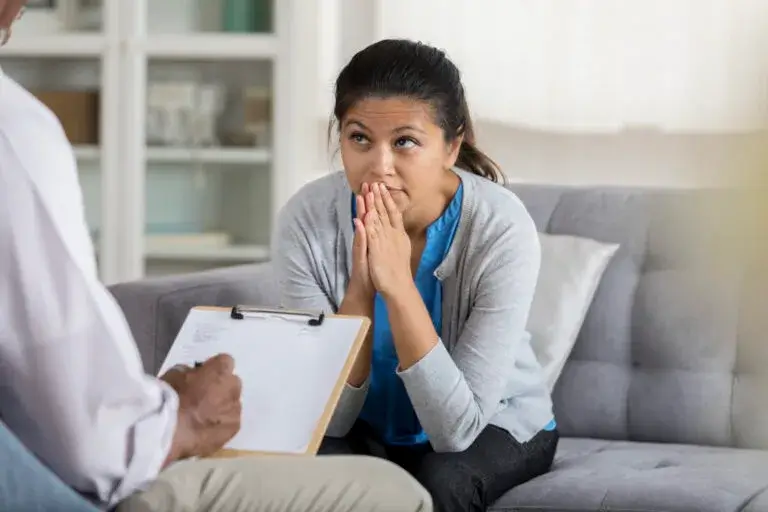What Are Bath Salts?: What to Know About Usage and Treatment
What are Bath Salts?: Introduction
What are bath salts? Synthetic bath salts are a type of man-made stimulant that mimics the effects of drugs like cocaine and methamphetamine. Unlike traditional bath salts that are used for relaxation and skincare purposes, synthetic bath salts can alter a person’s mood and behavior.

Learn More About Ripple Ranch Recovery Center
Chemical Composition and Ingredients
What Are Bath Salts?: Methods of Consumption
Note About Consumption
The Rise of Synthetic Bath Salts
Are They Illegal?
What are Bath Salts Known As?
What Are Bath Salts and Their Effects?
The Immediate Physical Experience
- Increased heart rate and blood pressure
- Dilated pupils
- Chest pain
- Nausea and vomiting
Altered Mindscapes: Psychological Shifts
The Long-Term Consequences of Bath Salts
What Are Bath Salts Like Compared to Other Stimulant Drugs?
There are several similarities and differences between synthetic bath salts and other stimulants. What are bath salts like compared to other stimulants? Let’s take a look:
Similarities
Differences
Challenges for Healthcare Professionals When Treating Bath Salts Addiction
Identification and Management
Using Bath Salts Along With Other Substances
Rapid Evolution of Compounds
Harm Reduction and Treatment Methods for Bath Salts
Harm Reduction Strategies
- Using smaller doses to reduce the risk of overdose.
- Not mixing bath salts with other substances, especially alcohol or opioids.
- Avoiding using the substance alone and having someone who is sober present in case of emergency.
- Seeking medical help immediately if experiencing adverse effects.
Treatment Options
- Detoxification: In cases of severe addiction, detoxification may be necessary to safely remove the drug from the body. This should be done under medical supervision to manage withdrawal symptoms.
- Therapy: Without addressing the underlying issues that led to drug use, individuals may be at a higher risk for relapse. Therapy can help address these root causes and provide coping mechanisms for managing cravings and triggers. Cognitive-behavioral therapy (CBT) and motivational interviewing (MI) are two therapeutic approaches that have shown success in treating addiction. A treatment provider will curate a tailored therapy program for each individual.
- Medication-Assisted Treatment (MAT): Medications such as buprenorphine and methadone have shown to be effective in reducing cravings and relapse rates for opioid addiction.5
- Support Groups: Groups such as Narcotics Anonymous or SMART Recovery can provide a support network for individuals in recovery. These groups focus on personal accountability, self-empowerment, and peer support.
The Role of Education in Prevention

Overcome Your Bath Salt Addiction With Ripple Ranch
At Ripple Ranch, we understand the complexities of synthetic bath salt addiction and the challenges that come with it. Our team of healthcare professionals are highly trained and experienced in treating this specific type of addiction, providing our clients with the best possible care.
How Can We Help?
- A personalized treatment plan tailored to your individual needs
- A safe and comfortable environment for detoxification, if necessary
- Evidence-based therapies to address underlying issues and promote long-term recovery
- Ongoing support and resources for relapse prevention
- Compassionate and non-judgmental care from our team of experts
Therapies We Provide for Treatment
- Cognitive-behavioral therapy
- Eye movement desensitization and reprocessing (EMDR)
- Recreational therapy
- Trauma-informed therapy
- Yoga and meditation
- Nutritional support
- Dual diagnosis treatment
Get in Touch Today
Ready to take the first step towards overcoming your addiction? Contact us today and start your journey towards a healthier, happier life. We are here for you every step of the way. Let Ripple Ranch be your guide to recovery.
Remember, it’s never too late to seek help and start living a fulfilling life free from addiction. Join us at Ripple Ranch and make a positive ripple effect in your life.
Resources
- 1https://www.ncbi.nlm.nih.gov/pmc/articles/PMC7257813/
- 2https://www.ncbi.nlm.nih.gov/pmc/articles/PMC3550219/
- 3https://www.samhsa.gov/data/report/bath-salts-were-involved-over-20000-drug-related-emergency-department-visits-2011
- 4https://www.sciencedirect.com/science/article/abs/pii/S0196064412000078
- 5https://nida.nih.gov/publications/research-reports/medications-to-treat-opioid-addiction/efficacy-medications-opioid-use-disorder





